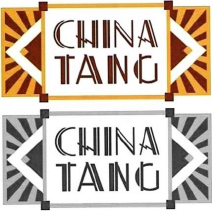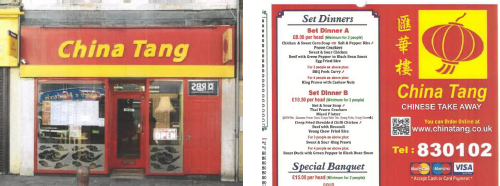Gnat and Company Ltd (a company incorporated under the laws of the British Virgin Islands) v West Lake East Ltd
| Jurisdiction | England & Wales |
| Judge | Hacon |
| Judgment Date | 16 February 2022 |
| Neutral Citation | [2022] EWHC 319 (IPEC) |
| Docket Number | Case No: IP-2020-000074 |
| Court | Intellectual Property Enterprise Court |
[2022] EWHC 319 (IPEC)
IN THE HIGH COURT OF JUSTICE
BUSINESS AND PROPERTY COURTS OF ENGLAND AND WALES
INTELLECTUAL PROPERTY ENTERPRISE COURT
Royal Courts of Justice
Rolls Building, London, EC4A 1NL
HIS HONOUR JUDGE Hacon
Case No: IP-2020-000074
David Ivison (instructed by Haseltine Lake Kempner LLP) for the Claimants
Charles King (instructed by AB James Solicitors) for the Defendants
Hearing date: 2 December 2021
Approved Judgment
I direct that pursuant to CPR PD 39A para 6.1 no official shorthand note shall be taken of this Judgment and that copies of this version as handed down may be treated as authentic.
HIS HONOUR JUDGE Hacon
Introduction
The second claimant (“CTL”) runs a Cantonese restaurant called “China Tang” at the Dorchester Hotel in Park Lane. The restaurant features opulent decor, apparently redolent of interwar Shanghai. It was opened in 2005 by Sir David Tang, businessman, writer and raconteur, after whom the restaurant is named.
As of 29 August 2005, the first claimant (“Gnat”) has been the owner of trade mark no. 2,415,093 (“the Trade Mark”) registered in respect of, among other things, “Restaurant services; catering services; cafes; cafeterias; and self-service restaurants” in class 43. It is a series mark in the following form:

CTL is licensed by Gnat under the Trade Mark.
The second defendant (“Mr Gu”) runs a Chinese takeaway in Barrow-in-Furness through the first defendant (“WLE”), of which he is the owner and sole director. WLE started trading in 2009 and has at all times traded under the name “China Tang”. These are images of the shop front and a sample menu:

In WLE's website pages the sign is used in the same ordinary typeface as used for the rest of the script in which the sign appears. I can treat WLE's sign as being the words “China Tang” as opposed to a stylised version of those words.
The claimants allege that the defendants have infringed their Trade Mark pursuant to s.10(2) and 10(3) of the Trade Marks Act 1994 (“the 1994 Act”). The claimants also claim goodwill in their restaurant business associated with the “China Tang” name and say that the defendants' running of their takeaway business under that name constitutes passing off.
The pleaded Defence includes an assertion of honest concurrent use and there is a Counterclaim for partial revocation of the Trade Mark because of non-use insofar as it is registered for “cafes; cafeterias; and self-service restaurants” (but not restaurant or catering services).
David Ivison appeared as counsel for the claimants, Charles King for the defendants.
The Witnesses
Nathalie Ford gave evidence for the claimants. She is the General Manager of CTL's restaurant business at The Dorchester. Mr Gu gave evidence for himself and WLE. Both Ms Ford and Mr Gu were good witnesses, explaining clearly the facts as they understood the facts to be.
The Average Consumer
Counsel were agreed that the average consumer is a user or potential user of restaurant or catering services – in other words almost every adult and child in the UK. This broad characterisation applies whether or not the specification of the Trade Mark includes “cafes”, “cafeterias” and “self-service restaurants”, which avoids the circular difficulty there could otherwise have been in determining whether there should be partial revocation, given that the average consumer plays a role in that determination 1.
The Counterclaim for Partial Revocation
I begin with the counterclaim for partial revocation since the assessment of infringement must be carried out by reference to the specification of services as it should be.
Section 11A of the 1994 Act provides:
11A Non-use as defence in infringement proceedings
(1) The proprietor of a trade mark is entitled to prohibit the use of a sign only to the extent that the registration of the trade mark is not liable to be revoked pursuant to section 46(1)(a) or (b) (revocation on basis of non-use) at the date the action for infringement is brought.
(2) Subsection (3) applies in relation to an action for infringement of a registered trade mark where the registration procedure for the trade mark was completed before the start of the period of five years ending with the date the action is brought.
(3) If the defendant so requests, the proprietor of the trade mark must furnish proof—
(a) that during the five-year period preceding the date the action for infringement is brought, the trade mark has been put to genuine use in the United Kingdom by or with the consent of the proprietor in relation to the goods and services for which it is registered and which are cited as justification for the action, or
(b) that there are proper reasons for non-use.
(4) Nothing in subsections (2) and (3) overrides any provision of section 46, as applied by subsection (1) (including the words from “Provided that” to the end of subsection (3)).”
The claimants did not resist an amendment to the specification of the Trade Mark to delete “self-service restaurants” and did not argue that the Trade Mark had been put to genuine use in relation to cafe or cafeteria services. They relied, however, on the approach to a fair trade mark specification discussed by Pumfrey J in Decon Laboratories Ltd v Fred Baker Scientific Ltd [2001] RPC 17:
“[23] In my judgment, the task is best performed by asking what would be a fair specification of goods having regard to the use that the proprietor has in fact made of the mark and assuming further that he will continue that use. Mr Campbell submitted that the specification of goods should in effect be drafted from scratch to encompass only the use which the registered proprietor has made of the mark. I accept that the starting point should be a limitation to the actual field of use. The difficulty lies in deciding on the width of the surviving specification, the correct formulation of which must depend largely upon questions of fact and degree. Let me take an example to which Neuberger J. refers in Typhoon [ Premier Brands UK Ltd v Typhoon Europe Ltd [2000] FSR 767]. There, the registration was (inter alia) for ‘domestic containers’. Suppose the proprietor uses the mark only on red tea caddies. How does one limit the registration? Obviously the use of the colour red is irrelevant, since it does not define a species of goods. But should the registration be limited to tea caddies? Neuberger J. thought not, since, as he put it, one should take the registration as one finds it, and it is not possible to distinguish between containers for food, containers for tea, and tea caddies. He added that he considered that to permit this kind of detailed approach to a registration leads to uncertainty and invites litigation. So he considered that the registration should remain in respect of domestic containers. I would agree wholeheartedly with this statement of the problem, but the answer must, I believe, depend upon the facts of the case.”
The claimants' submission was simply that a fair specification in the present case would include services provided by cafes and cafeterias.
The defendants drew attention to the judgment of Arnold J in Stichtung BDO v BDO Unibank Inc [2013] EWHC 418 (Ch):
“[55] In NIRVANA Trade Mark (BL O/262/06), when sitting as the Appointed Person, I reviewed the decisions of the English courts in MINERVA Trade Mark [2000] F.S.R. 734; Decon Laboratories Ltd v Fred Baker Scientific Ltd [2001] R.P.C. 17; Daimler Chrysler AG v Alavi (t/a Merc) [2001] R.P.C. 42; Thomson Holidays Ltd v Norwegian Cruise Line Ltd [2002] EWCA Civ 1828; [2003] R.P.C. 32; West v Fuller Smith & Turner Plc [2003] EWCA Civ 48; [2003] F.S.R. 44; Associated Newspapers Ltd v Express Newspapers [2003] EWHC 1322; [2003] F.S.R. 51 and H Young (Operations) Ltd v Medici Ltd (ANIMAL Trade Mark) [2003] EWHC 1589; [2004] F.S.R. 19. I concluded at [57] that these were broadly consistent with ALADIN [ Reckitt Benckiser (España) SL v OHIM (T-126/03) [2005] ECR II-2861], but that to the extent there was a difference I was bounded by the English authorities. I went on:
‘[58] I derive the following propositions from the case law reviewed above:
(1) The tribunal's first task is to find as a fact what goods or services there has been genuine use of the trade mark in relation to during the relevant period: Decon v Fred Baker at [24]; Thomson v Norwegian at [30].
(2) Next the tribunal must arrive at a fair specification having regard to the use made: Decon v Fred Baker at [23]; Thomson v Norwegian at [31].
(3) In arriving at a fair specification, the tribunal is not constrained by the existing wording of the specification of goods or services, and in particular is not constrained to adopt a blue-pencil approach to that wording: MINERVA at 738; Decon v Fred Baker at [21]; Thomson v Norwegian at [29].
(4) In arriving at a fair specification, the tribunal should strike a balance between the respective interests of the proprietor, other traders and the public having regard to the protection afforded by a registered trade mark: Decon v Fred Baker at [24]; Thomson v Norwegian at [29]; ANIMAL at [20].
(5) In order to decide what is a fair specification, the tribunal should inform itself about the relevant trade and then decide how the average consumer would fairly describe the goods or services in relation to which the trade mark has been used: Thomson v Norwegian at [31]; West v Fuller at [53].
(6) In deciding what is a fair description, the average consumer must be taken to know the purpose of the description: ANIMAL at [20].
(7) What is a fair description will depend on the nature of the goods, the...
To continue reading
Request your trial-
Court Finds Family-run China Tang Takeaway In Cumbria Infringed Park Lane Restaurant's Trade Mark
...be consulted, in part so that those rights may be respected." Case citation: GNAT and Company Ltd & Anor v West Lake East Ltd & Anor [2022]EWHC 319 (IPEC) (16 February Our full article on this case appears in Entertainment Law Review: please click here for link to abstract on Westlaw. The c......
-
From Beijing To Barrow Via Mayfair
...take away in Barrow-in-Furness (GNAT and Company Limited and China Tang London Limited -vs- West Lake East Limited and Honglu Gu [2022] EWHC 319 (IPEC)) raises a number issues in relation to trade mark infringement that are of continuing interest moving The Claimant had registered the trade......

